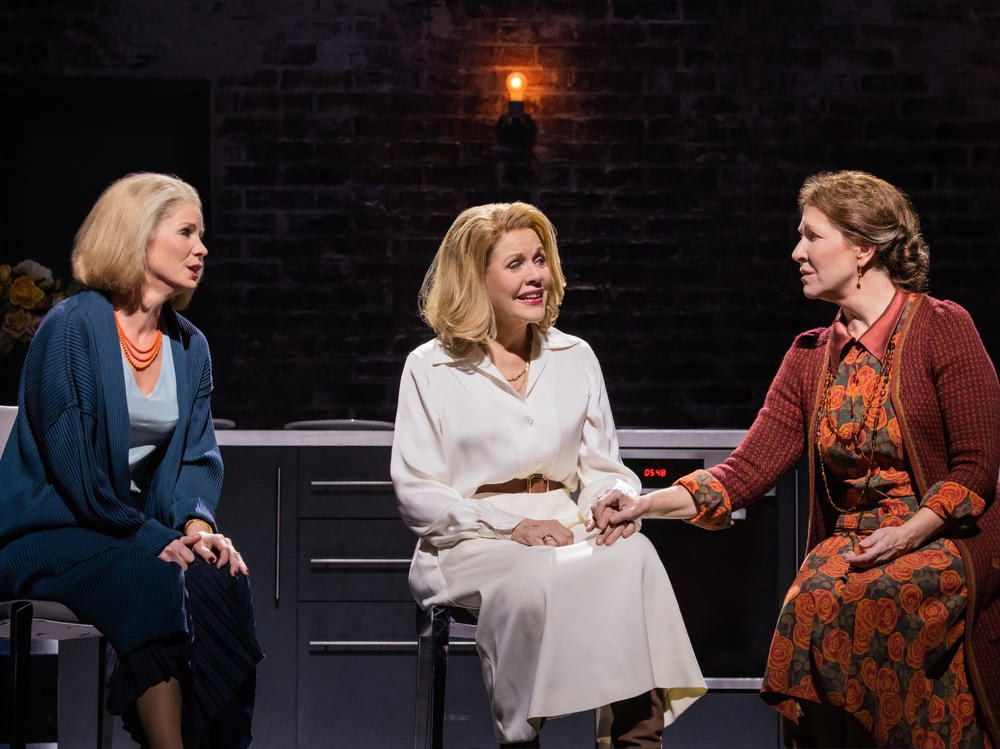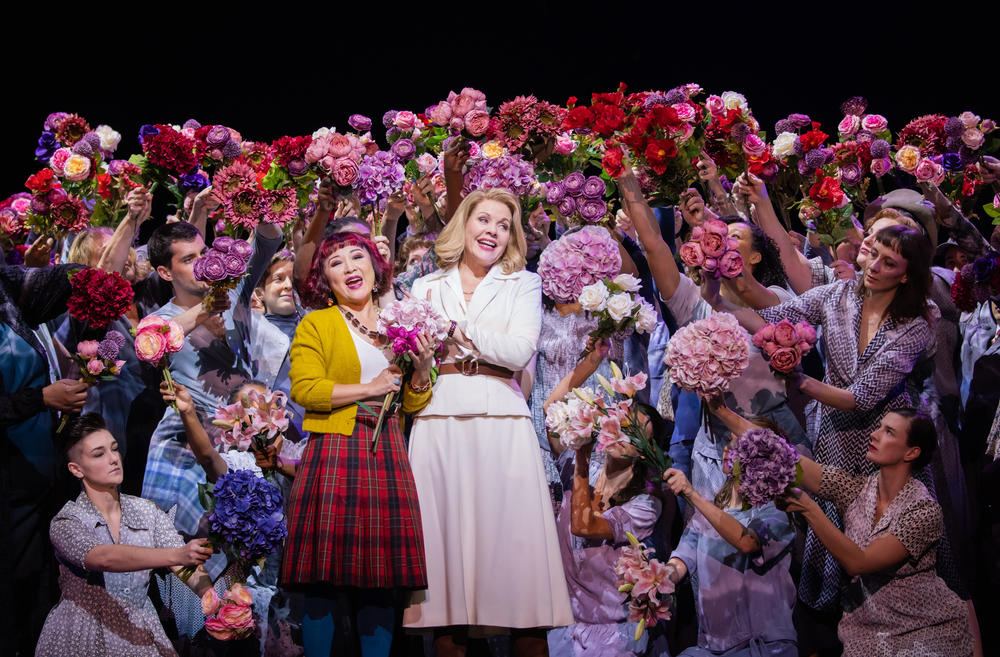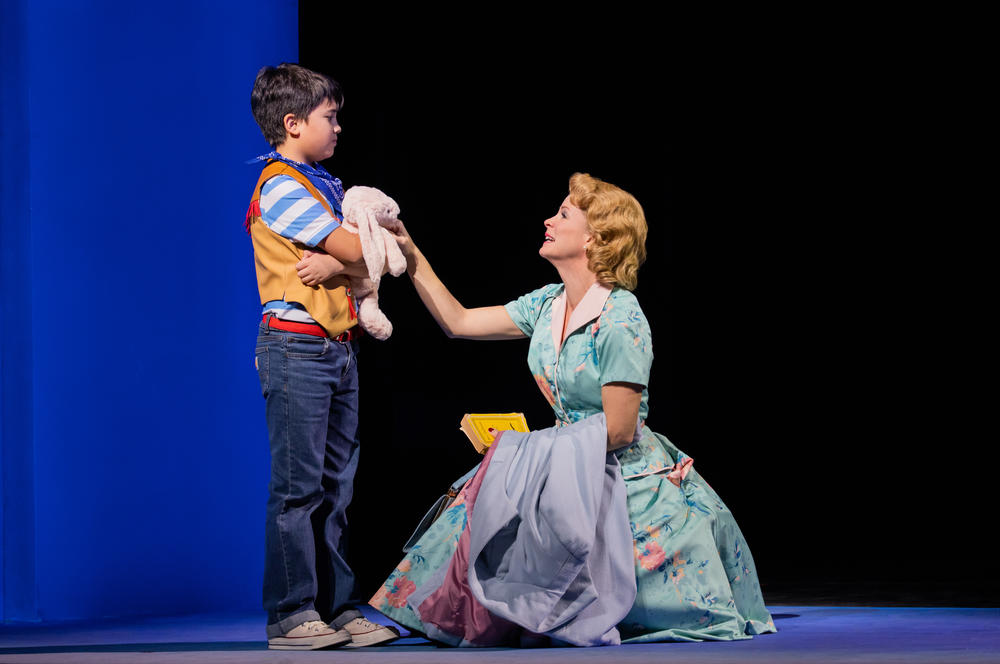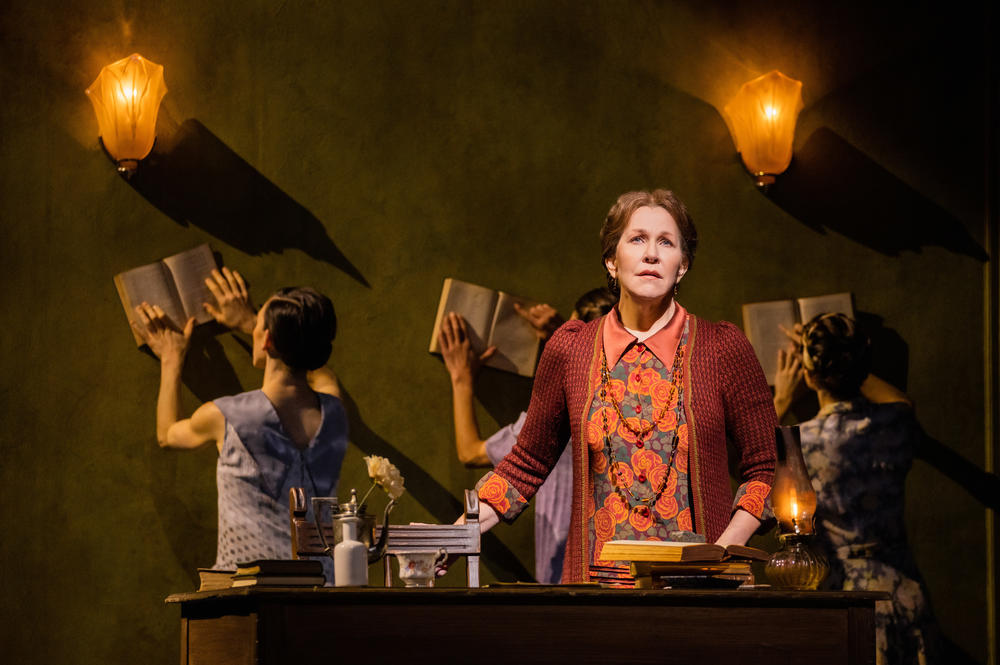Section Branding
Header Content
Three superstar divas power opera 'The Hours' - coming to movie theaters everywhere.
Primary Content
The new opera The Hours is based on a film directed by Stephen Daldry and a novel by Michael Cunningham, which itself is based on a book (Mrs. Dalloway) by Virginia Woolf.
But it captures the material in a brand-new way.
"I knew the book. I knew the film," said Pulitzer Prize-winning composer, Kevin Puts. "I knew that what you can do on an opera stage, and through music and through harmony...that simultaneity...is something that works. I could imagine, you know, duets and trios that would eventually involve the three ladies who live in these different time periods in the 20th century, in different places. And that was compelling, just from a musical standpoint."
Michael Cunningham's Pulitzer Prize-winning novel is a look at an eventful day in the lives of three women, and how their experiences intersect. Evoking Virginia Woolf's writing techniques, he entwines three characters' stories: the British novelist herself, struggling to create Mrs. Dalloway in 1923; an unhappy 1940s housewife in Los Angeles who is reading the book; and a New York editor in the late 1990s preparing a party for her friend and former lover, who's dying of AIDS.
Now those three women are being played by a powerhouse trio of divas at the Metropolitan Opera: Renée Fleming, Joyce DiDonato and Kelli O'Hara. It will be broadcast in HD at movie theaters around the world on Saturday.
The opera came about because Puts collaborated with opera superstar Fleming on a song cycle called The Brightness of Light – a setting of letters between Georgia O'Keefe and Alfred Stieglitz. Puts approached Fleming at a party after the cycle's premiere, asking if she'd like to work on an opera together.
"And I said, 'Absolutely. You know, I would love it,'" said Fleming. "And that's how the conversation started."
When someone in Fleming's office suggested The Hours, they both thought it was a perfect idea - as did the Metropolitan Opera and Philadelphia Orchestra, which co-commissioned the piece.
Greg Pierce, a playwright who has written the scripts for a couple of musicals with John Kander and the libretto for the opera Fellow Travelers was enlisted to do the libretto.
"The Met is a very big space," Pierce said. "It's got a massive chorus, a big orchestra. Why not make use of all of that? You could do an Hours that's really intimate, a chamber piece. That's not what we wanted to do."
Much of the book's narration is interior, and Puts and Pierce decided to use the chorus to express some of the inner voices of the three main characters.
"We didn't want the chorus to be townspeople, you know? And nothing against townspeople. You know, I love Brigadoon, but we needed them to do something else for The Hours," said Pierce. "And the idea that they could potentially go in and out of the minds of these main characters and argue with them, they could be in inner argument – it was really exciting to us."
In Phelim McDermott's staging and Annie-B Parson's choreography, the chorus and dancers are constantly onstage, helping to underline the central characters' emotional states.
Having three lead roles in three different time frames led composer Puts to come up with three different "musics," as he put it. Clarissa, the 1990s character – who shares the same first name as the protagonist in Mrs. Dalloway – has "a kind of American quality to the harmony, and a certain kind of minimalist pulse," Puts said.
The character of Laura Brown, the depressed, suicidal 1940s housewife, played by Kelli O'Hara, is based, in part, on Michael Cunningham's own mother. Puts wrote music in the scenes with her family that "have a kind of Lawrence Welk/ Leave It to Beaver/Henry Mancini sort of quality. But it's not really her. It's really her family," he said.
Virginia Woolf is also suicidal - in the opera and in real life – but filled with abundant creativity. For mezzo-soprano Joyce DiDonato, Puts composed music that's dark, with surprising harmonies and moments that sometimes have "a kind of baroque quality to some of the ornamentation," said Puts. He said he was naturally thinking of Joyce DiDonato's vocal quality, especially the way she sounds while singing baroque repertoire.
The process of creating the opera was intensely collaborative with all three singers, who were free to make suggestions about their vocal lines.
"I tell you it has truly been one of the great experiences of my artistic life," said the multi-Grammy Award-winning DiDonato. "I said, 'If I do this, I can achieve something a little bit more magical or whatever.' And he said, 'The only constraint is I can't change the orchestra, but everything else was open for discussion.' And I think we found some really wonderful things."
While there have been inevitable changes in the transfer from page and screenplay to stage, the themes of Michael Cunningham's novel are still there – the issues of mental health and suicidal ideation, how past and present are constantly in conversation with one another, queerness, how all three women are filled with regrets and loneliness.
Yet novelist Cunningham left the creators to their own devices. He didn't see the opera until opening night at the Met. "It was fantastic," he said. "It's a strange experience. as it would be. It was a strange experience seeing the movie all those years ago."
"I genuinely don't have this thing about the 'sacred text," Cunningham said. "If anything, I feel like it is a life sign in a novel, that it can be adapted; that it has enough space to be able to take on other forms."
If there is one moment in the opera that deviates most from Cunningham's original, it's the ending, said librettist Pierce.
"We knew that we needed these three incredible singers to sing together," he said. "When you're telling these three stories and you're in an opera, people are going to be waiting for that. And I was waiting for that. And it was really scary writing that because we wanted to do it right."
What he and Puts did was create a trio that's kind of afterHours – the narrative is wrapped up, the relationship between all three characters is made clear and the three women sing to one another out of time and space.
"I feel like that's where opera solved the problem of needing to really connect these three souls," said O'Hara. "These three entities, hour after hour over the years. At some point, you had to break these walls and bring these three women together."
DiDonato said she has a hard time getting through the finale without crying. "This moment, these three titanic divas sitting down and saying, 'You're not alone.' That is deeply comforting, especially in 2022."
Copyright 2022 NPR. To see more, visit https://www.npr.org.
Correction
The opera is based on the book and the movie of "The Hours," not just the movie.





